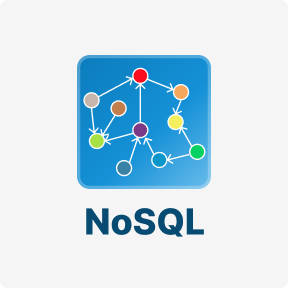Public, Private, and Hybrid Cloud Deployment Models Explained: Examples and Differences
Another thing to keep in mind is that public environments have a shared nature, which increases security risks, such as unauthorized data viewing by other customers that use the same hardware platform. It would help if you also made a risk assessment on the visibility and control. Customers have restricted visibility and control over the cloud resource because the one responsible for administering the infrastructure is the cloud provider. When it comes to the public model, as the control of the IT infrastructure is surrendered by the customers to an external party, customers need to rethink the way they operate.
- In most cases, people referring to Software as a Service are referring to end-user applications.
- Community Clouds address industry-specific requirements while delivering the cost-effectiveness of a Public cloud.
- With a hybrid solution, you may host the app in a safe environment while taking advantage of the public cloud’s cost savings.
- Which deployment models of cloud computing examples are the most popular?
- Software as a Service provides you with a completed product that is run and managed by the service provider.
- With so much to see and do, it’s no wonder that Paris is one of the most popular tourist destinations in the world.
- A traditional hybrid cloud connects a private cloud to a public cloud, typically involving large, complex middleware iterations.
Users are not responsible for providing servers, infrastructure, and bandwidth – this is entirely the scope of the provider. Flexible pricing structure- most third-party, public service providers offer a pay-by-the-hour payment plan. This is a cost-effective pricing strategy where the business pays for the services it needs instead of paying a fixed cost upfront. This flexibility is especially beneficial to small and medium-sized enterprises as it allows tight budget control. Cloud computing also offers the solution to the mounting pressure for organizations to devise ways to beat cybercriminals. When coupled with cloud native security best practices, cloud computing provides comprehensive security solutions that organizations need to carry out business globally.
COMPLETE DIGITAL SERVER SOLUTIONS FOR ALL
The company also offers consulting services and analyses to identify business-enhancing operations and technologies. This way of cloud computing deployment provides a higher level of abstraction. The service provider manages virtually every layer of the cloud infrastructure. The difference with PaaS is that you are limited to a specific application. On the other hand, you can deploy a MySQL database and start writing data to it in a matter of minutes. You get a platform that does nothing by itself, on which you create something that works.
This could be an individual server or some servers working together. Because there are multiple “clouds” working together, this type of system also has its unique issues with data synchronization and management. If you want to keep your data secure while still being able to take advantage of resources from multiple vendors at once, this is probably your best option.
What is a private cloud?
As it offers customized solutions to the business, it is very expensive but at the same time reliable. The hybrid cloud deployment model combines a public and private cloud. Multi-cloud and community clouds are also considered as a part now. Besides these three examples, community clouds are also used by companies trying to enable remote employees to securely connect to their core systems from any device over any network. Organizations also use them to test a new piece of innovation governed by regulations before putting it on a public cloud.
The private cloud deployment model is the exact opposite of the public cloud deployment model. The distinction between private and public clouds is in how you handle all of the hardware. It is also called the “internal cloud” & it refers to the ability to access systems and services within a given border or organization. The cloud platform is implemented in a cloud-based secure environment that is protected by powerful firewalls and under the supervision of an organization’s IT department. The private cloud gives greater flexibility of control over cloud resources.
Type of Cloud Deployment Model
At DICEUS, we develop cloud-based applications that enable customer organizations to leverage resources regardless of geographic location. Our solutions accelerate time-to-market, lower costs, and increase operational efficiencies by rapidly deploying cloud and IT infrastructures. https://www.globalcloudteam.com/ The biggest concerns regarding Community Cloud arecloud security considerationsand trust. No standard cloud model exists for defining best practices and identifying security liabilities of the data and applications which would reside on these servers.
It is a diagram of how users interact with resources and network infrastructure located in different locations. It determines where the servers you use are located, who manages them, what you can change yourself, whether you provide services or have to build them yourself. A hybrid multi-cloud lets you choose the most suitable cloud offering for each application and workload and freely shift workloads between private and public clouds as needed.
Advantages of Private Cloud
You use resources from more than one public cloud provider for various use cases. A hybrid cloud consists of both public and private cloud deployments. It involves connecting on-premise infrastructure to a public cloud platform. You can use a hybrid model when you have some resources on a public cloud and others in your local data centre. Different types of cloud deployment models work as a virtual computing environment depending on who has access to the cloud infrastructure and how much data you want to store. Public cloud is more or less a platform that leverages a standard cloud computing model to make storage, networking, virtual machines, etc. available to the public over the public internet.
A centralized cloud facilitates project development, management and implementation. With a better understanding of what public cloud is and the cloud service models that providers offer, let’s look at the advantages and disadvantages. The definition of cloud computing is the system of computer resources, infrastructure, computing power, and data storage that are available on-demand without user involvement.
Benefits of Community Clouds
Retail We have experience in delivering software solutions for world-leading retailers. Dejan is the Head of Content at phoenixNAP with over 8 years of experience in Web publishing and tech writing. Prior to joining phoenixNAP, he was Chief Editor of several websites striving to advocate for emerging technologies. He is dedicated to simplifying complex notions and providing meaningful insight into datacenter and cloud technology. Rules and regulations related to compliance within a Community Cloud can be confusing. The systems of one organization may have to adhere to the rules and regulations of other organizations involved in the community as well.
Specific types of cloud deployment models provide variability in use. For example, for various reasons, some companies are more suitable for public clouds. In contrast, others do not want to use them due to the complexity, secrecy of projects, or legislation requirements on the protection https://www.globalcloudteam.com/cloud-deployment-models-basics-you-should-know/ of intellectual property rights. Hybrid cloud architectures help minimize security risks by restricting private data exposure to public cloud environments. These architectures typically include private data centers or clouds and public infrastructure-as-a-service platforms.
What is a Community Cloud?
IaaS also offers better flexibility since the on-demand hardware resources can be more easily tailored to your specific needs. But for the community model to work properly, the participatory companies should have similar security, privacy, and performance requirements. Platform as a Service allows outsourcing of hardware infrastructure and software environment, including databases, integration layers, runtimes, and more. You should also consider the scalability options that the model offers.



